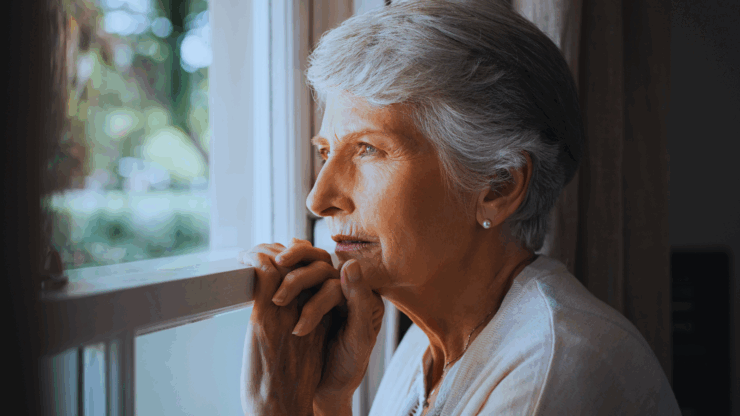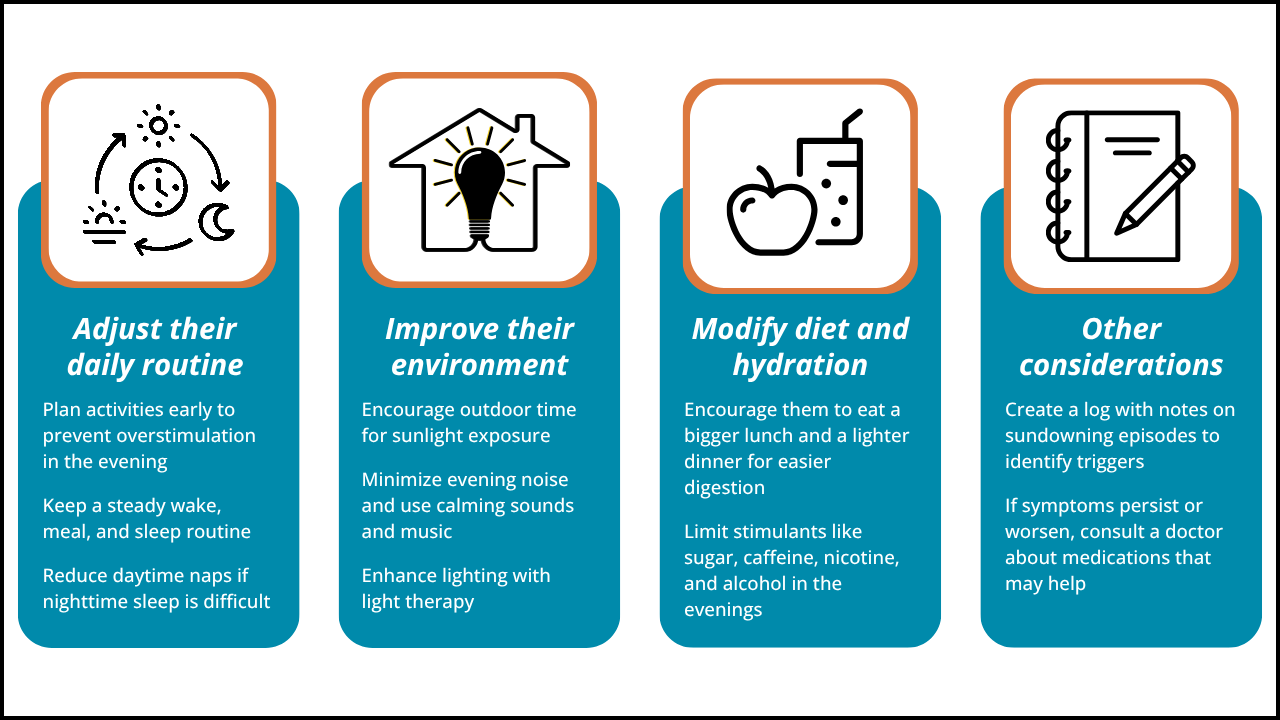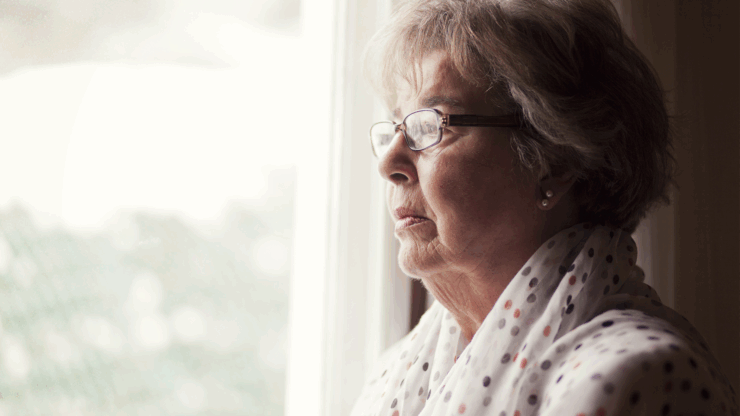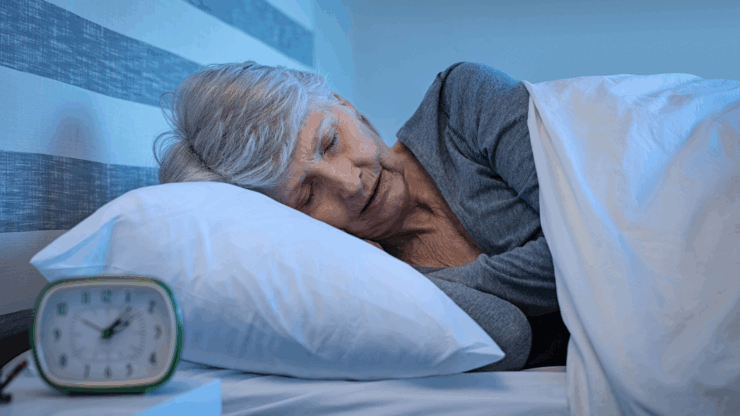
Sundowning & Dementia: What It Is and How to Help
Key Takeaways
- Sundowning causes confusion and agitation in the late afternoon or evening.
- Common signs include pacing, anxiety, and sleep disruption.
- Keeping routines consistent and lighting bright can help.
- Healthy meals, hydration, and light activity support calmer evenings.
What is sundowning?
If you have a loved one with dementia, you may have noticed fluctuations in their mood and behavior throughout the day. If these symptoms worsen in the late afternoon and evening, your loved one may be experiencing “sundowning,” a common occurrence also known as “sundowner’s syndrome.”
Sundowning can begin at any stage of dementia, though it’s more commonly observed in the middle to late stages. It also tends to be more noticeable during winter months when there are fewer daylight hours.
What are the symptoms of sundowning?
While dementia can affect cognitive, psychological, and physical functions, sundowning primarily brings psychological disturbances and behavioral changes. Common symptoms include:
- Increased confusion and disorientation
- Difficulty sleeping
- Anxiety and agitation
- Hallucinations and delusions
- Pacing or wandering
- Mood changes
What causes the sundowning?
Although the exact cause of sundowning is unknown, several environmental, physical, and psychological factors can exacerbate the symptoms that individuals with dementia experience.
Environmental triggers:
- Changes to their routine or being in a new place, increasing confusion
- Low lighting and shadows leading to hallucinations
- Overstimulation because of their surroundings or picking up on the stress of those around them
- Having less caregiver support to mitigate and address symptoms
Sleep and fatigue:
- Disruptions to the body’s circadian rhythm can make sleep irregular
- Mental or physical exhaustion may worsen irritability
- Waking up from dreams and struggling to separate them from reality can cause fear
Physical factors:
- Sensory impairment, like sight or hearing loss, can make it difficult to walk or speak
- Hunger, thirst, or being in pain can trigger confusion
Mood disorder, medication, and medical conditions:
- Overstimulation during the day can make it difficult to wind down
- Comorbid mood disorders like anxiety and depression can increase distress
- Side effects of medications can interfere with energy levels
- Urinary tract infections can cause confusion
- Sleep apnea can disrupt sleep
How to reduce or manage symptoms
While there’s no cure for sundowning, there are proactive steps you can take to minimize its effects and improve your loved one’s quality of life.
Adjust their daily routine:
- Schedule activities earlier in the day to avoid overstimulation later
- Maintain a consistent routine for waking, eating, and sleeping
- Limit daytime naps if they have trouble sleeping at night
Improve their environment:
- Ensure they get natural sunlight by going outside as much as possible
- Less stimulation later in the day, such as loud TV, music, and chores
- Play soothing sounds and music to help them relax
- Improve lighting with light therapy to regulate their internal clock
- Bring familiar items if they’re in a new place, such as furniture or family photos from home if they’re moving into assisted living
Modify diet and hydration:
- Encourage them to eat a bigger lunch and a lighter dinner for easier digestion
- Limit stimulants like sugar, caffeine, nicotine, and alcohol in the evenings
Other:
- Create a log with notes on sundowning episodes to identify triggers
- If symptoms persist or worsen, consult a doctor about potential medications that may help

How can in-home care help?
Professional in-home caregivers can provide essential support to reduce the stress associated with sundowning. Their expertise can reassure you that your loved one is in good hands, and their personalized care can provide the support your loved one needs. By understanding sundowning, caregivers can create a calmer environment to ease symptoms and increase comfort.
If you’re ready to improve your loved one’s quality of life, contact our care team today to learn more about our in-home care services.

















